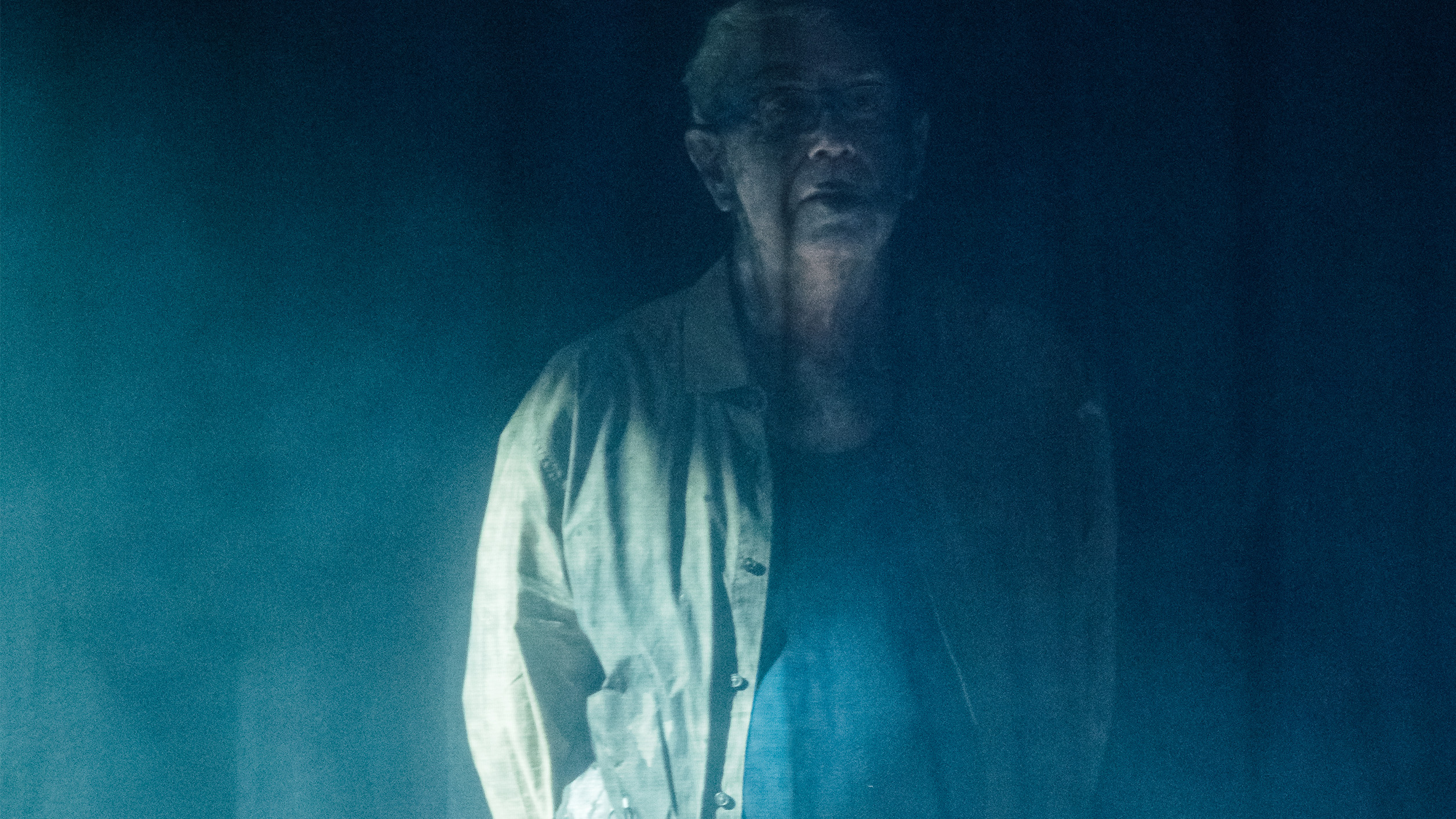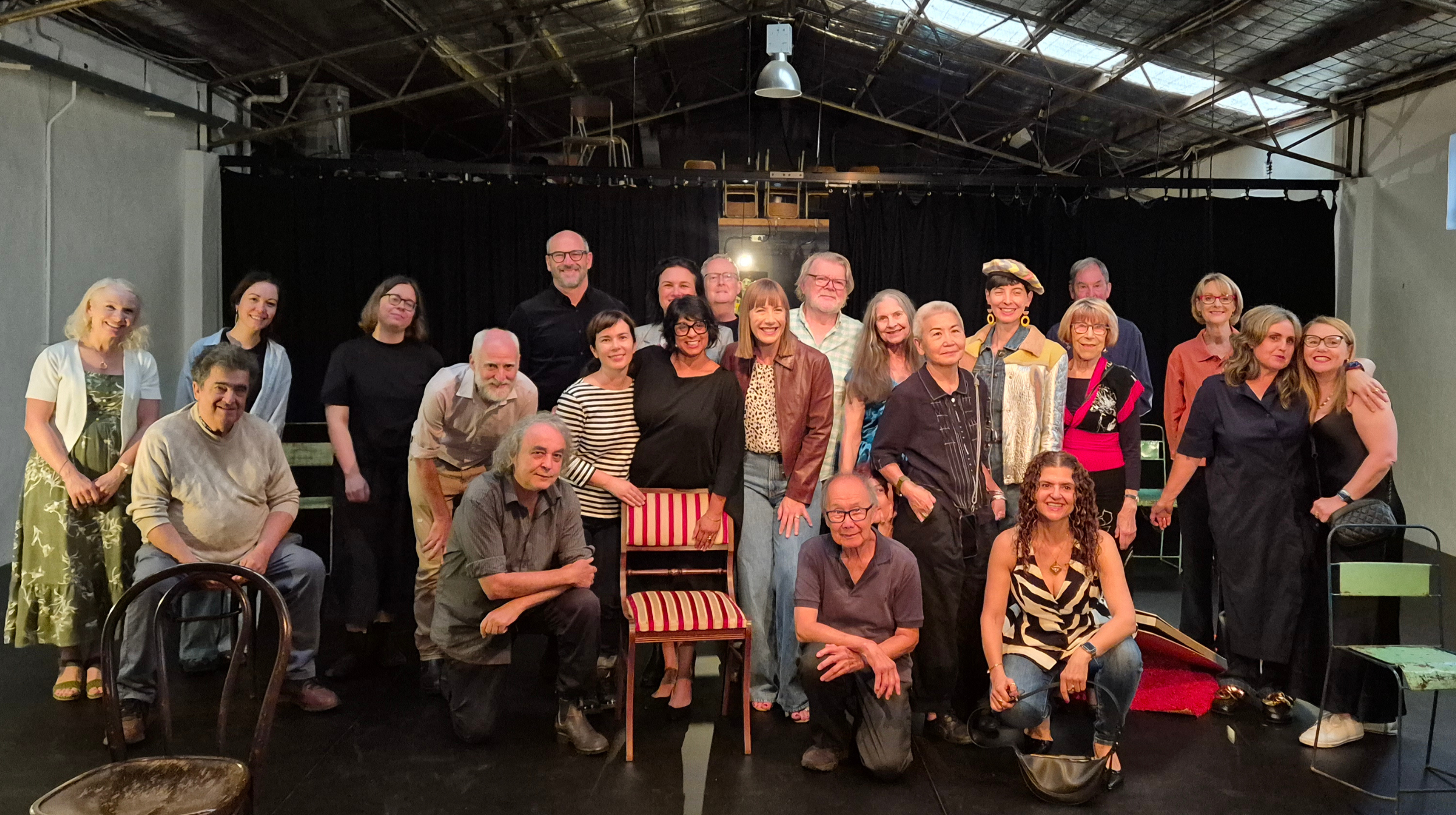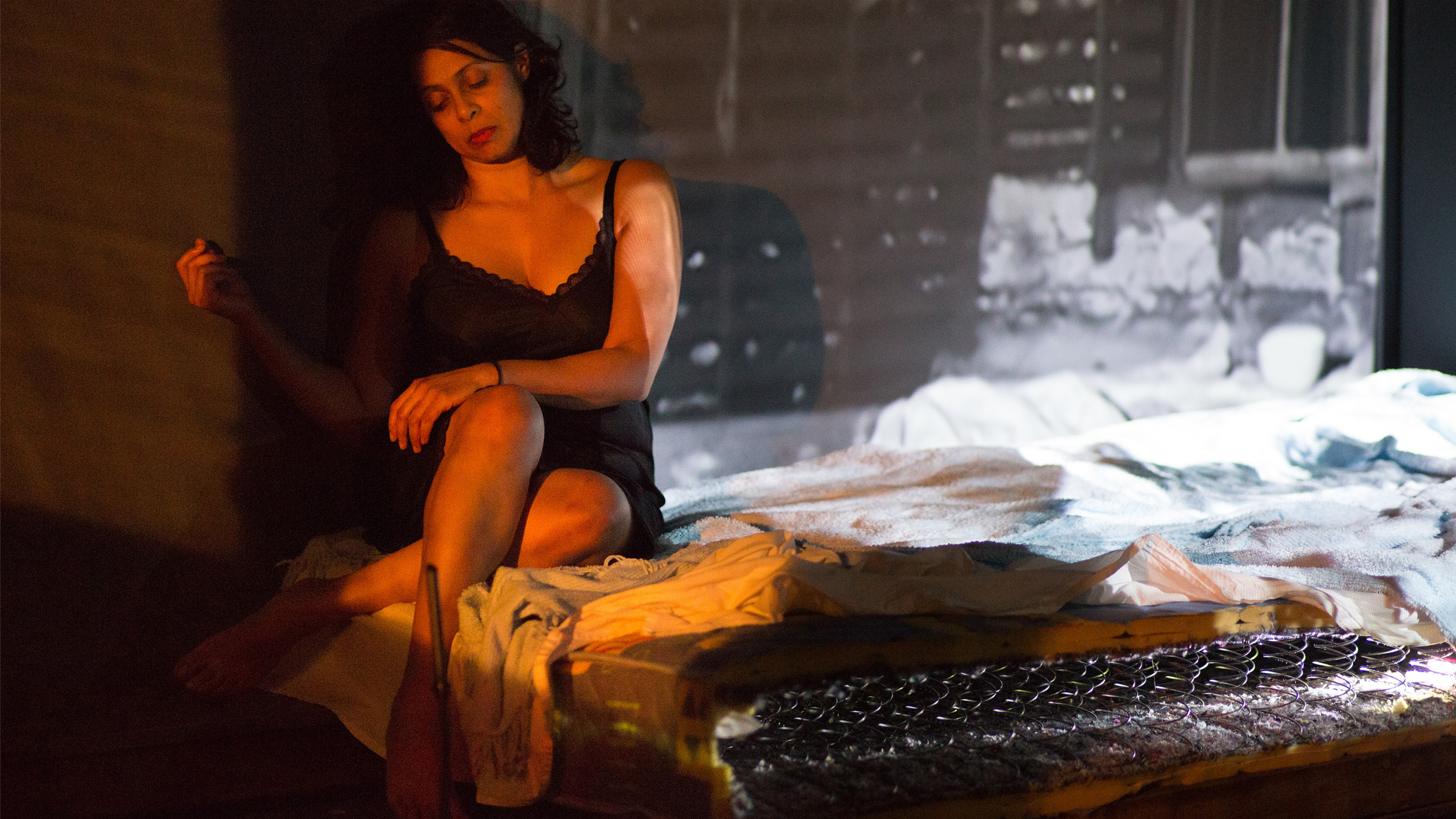
Stifters Dinge :: the strange sounds of the Anthropocene
29.05.2019
A little background to one of the influences behind ‘The foul of the air’.
Many composers, directors, or what we might most broadly call theatre “animateurs” have been exceeding the limits of traditional dramaturgy since at least the late 60s (Lehmann 2006: i). These animateurs have moved ‘towards postdramatic forms that de-emphasise text, narrative and fictional characters, seeking alternative dramaturgies (visual, spatial, temporal, musical)’ (Roesner 2013: 9) that extend theatre’s aesthetic and political potentialities (Jürs-Munby in Lehmann 2006: 6) and perturb audience perception in different ways. Within the field of composed theatre described by David Roesner, ‘the musical notion of composing [is key] to the theatrical aspects of performing and staging’ (2013: 11), and this particular dramaturgical ‘lens’ takes its cues from composers such as ‘Arnold Schönberg, John Cage, Mauricio Kagel [and] Georges Aperghis’ (2013: 9), the latter two especially prominent in the development of experimental music theatre. However it is the former two — Schönberg and Cage — to which we can appeal for means of approaching Heiner Goebbel’s thoroughly postdramatic, thoroughly composed — and thoroughly political — Stifters Dinge (2008).
Stifters Dinge unfolds as a predominantly automated, though never automatous, work that is ‘equal parts musical performance, theatrical presentation, art installation and environmental space’ (Tommasini 2009). It is “scored”, mutatis mutandis, for five suspended pianos, played, accompanied, and superseded in the work’s sonic texture by an array of various electronics, mechanisms, and voice recordings. Taking Cage’s prepared piano close to its logical extreme, the pianos are positioned laterally, their interiors exposed and their strings operated in a variety of ways that result in timbres that are more or less metallic, woody, and/or resonant and pitches that often sit between semitones. Yet despite their clearly painstaking preparation, the dinge (“things”) decidedly do not evoke an unthinking, unfeeling, inhuman presence. Much like Cage’s Sonatas and Interludes (1948), what might superficially sound sterile and lifeless is more accurately thought of as a highly contingent, “living” entity that is liable to change in interaction with the human performer, with nuts and bolts and other “preparations” falling through, bouncing across, or otherwise affecting the strings in unpredictable ways. In Goebbels’ work, the audience’s perception of the dinge as inanimate is challenged by the ‘sprouting [of] gaunt, leafless branches’ (O’Hagan 2008) from behind the pianos, as well as other environmental changes that predominantly affect three rectangular fields in front of the pianos. Two stagehands initially sift salt or a similar substance across the fields, then connecting plastic tubes to three adjacent tanks that dribble water out onto them, turning them to shallow pools in what St Anne calls a ‘gesture of violence’ (in conversation, 7 Mar 2019); later, freezing fog blankets them. These objects are not inert and unfeeling but churn and tremble and totter with a life all of their own.
Paradoxically, it is exactly the painstakingness of the work’s composition that, just as in Schönberg’s strictly twelve-tone serialist music, gives the audience a sense of some deeper, inner working behind the notional face of the work. To encounter Stifters Dinge is, in a word, uncanny. We recognise its sentience but can’t quite pinpoint it, stare it down directly.
Schönberg was no passionless theoretician, and earlier expressionist works such as Verklärte Nacht (1899) and Gurre-Lieder (1910) quickly dispel the notion that he was unable to inject emotion into his music. Rather the emotional content of his more esoteric works is withdrawn, only accessible in a way not unlike the Hindu concept of rasa or ‘aesthetic quality’ (Coomaraswamy in Pritchett 1993: 29) to which Cage appeals in explaining his Sonatas and Interludes: aesthetically significant, engaging, and agreeable, if quite inscrutable.
For a more directly political reading, we might say Stifters Dinge embodies the inscrutable complexity and scale of the Anthropocene, the geologic epoch in which we find ourselves. Its exhibition of multiple, intersecting timescales through gradual environmental change, musical repetition, and soundbites of 20th-century figures such as Claude Lévi-Strauss, Malcolm X, and William S Burroughs lends the work a mystical, gesamtkunstwerk-y quality, as if it were an extraterrestrial machine measuring human presence and impact on the planet, collecting data in its own, deliberate way. Among other things, the work “indexes” paintings of Uccello (Night Hunt, 1460), van Ruisdael (Swamp, 1660), ethnographic recordings from Papua New Guinea and Colombia, the slow movement from Bach’s Italian Concerto (BWV 971), and the words of 19th- century Austrian realist Adalbert Stifter himself (spoken by Scottish actor Bill Paterson) which approach the sublime in their thick description of alpine wilderness. And yet, as Lévi-Strauss reminds us (albeit in French), there is no place on Earth untouched by human hand, no place ‘totalement vierge, totalement inconnu’. The juxtaposition of these two particular soundbites implies a tension that we must grapple with a lot more readily if we are to survive and flourish beyond our current crisis: the tension between thinking as individuals, as fleshy, specifically attuned beings in the world, and thinking as a species, on a level that necessarily transcends empirical observation and which refuses simple human/animal and nature/culture divides; along with refusing all the other inimical dualisms that follow, those which Val Plumwood so deftly describes in her seminal Feminism and the Mastery of Nature (1993: 43). In an interview, Goebbels speaks to exactly this sort of multiscalar, multitemporal thinking by describing the work as something that‘decelerates time but increases [one’s] attention’, and which ‘[relates] humanity and the elements which we cannot master’ (Artangel 2012). The latter point reminds me also of Julietta Singh’s Unthinking Mastery, a book which systemically unpacks the stranglehold of mastery as a human orientation across not just colonial social formations but in regard to language and matter itself, and crucially which remains as a spectre in anticolonial discourse (2018: 24 et passim). The simple takeaway here is that such thinking — thinking against mastery, against colonialism, against Anthropocene-as-apocalypse — can be hard, hard to do sincerely, carefully, hopefully; no thinker, however great, is immune to the residue of history. Like many other thinkers, Gandhi and Fanon are for Singh profoundly haunted and messy; our challenge is to ‘mobilise their messiness’ (2018: 30).
Though it might be a bit forgiving, we could say Goebbels effectively mobilises the messiness of men like Lévi-Strauss, Malcolm X, and Burroughs, all three of whom, for example, were, to varying degrees though always legitimately, described as misogynists (Ortner 1974; Muir 2011; Olson 2015). As generative as the result is, we must also wonder what a truly feminist response to Stifters Dinge would look, sound, and feel like. Throughout this brief, meandering, through-composed analysis, I hope to have flagged some trains of thought along which such a response might unfold.
Mark Bosch is completing a Bachelor of Arts with majors in French and Gender Studies at the University of Sydney, and will be completing an Honours project with an environmental focus in 2019. He plays the violin for leisure, occasionally freelances, and has since 2017 been a member of the Sydney University Symphony Orchestra. He also writes for the online youth classical music magazine CutCommon, and volunteers with the AYCC (Australian Youth Climate Coalition). Mark’s other interests include journalling and digital subcultures.
REFERENCES
Rebstock, M. & D. Roesner (eds.) (2013), Composed Theatre. Intellect. Lehmann, H-T. (2006), Postdramatic Theatre. Routledge.
Singh, J. (2018), Unthinking Mastery. Duke University Press.
Pritchett, J. (1993), The Music of John Cage. Cambridge University Press.
Tommasini, A. (Dec 17 2009), Haunted Air Piano, New York Times, accessed 9 Mar 2019 at https://www.nytimes.com/2009/12/18/arts/music/18heiner.html.
O’Hagan, S. (20 Apr 2008), Mixing puzzle with pleasure, The Guardian, accessed 9 Mar 2019 at https://www.theguardian.com/artanddesign/2008/apr/20/art.
Artangel (Nov 7 2012), Interview: Heiner Goebbels and Klaus Grünberg, Stifter’s Dinge (2012), accessed 10 Mar 2019 at https://vimeo.com/52997063.
Plumwood, V. (1993), Feminism and the Mastery of Nature. Routledge.
Ortner, S. (1974), “Is female to male as nature is to culture?” in M. Z. Rosaldo & L. Lamphere (eds.), Woman, Culture, and Society. Stanford, CA: Stanford University Press, 68–87.
Muir, H. (7 Apr 2011), Malcolm X: the man behind the myth, The Guardian, accessed 10 Mar 2019 at https://www.theguardian.com/world/2011/apr/07/malcolm-x-man-behind-myth.
Olson, B. H. (4 Mar 2015), William S. Burroughs’ Ugly Spirit, Resurrected, PopMatters, accessed 10 Mar 2019 at https://www.popmatters.com/191025-barry-miles-call-me-burroughs-a-life-2495556787.html.
Header image is an audio waveform visualisation of Stifters Dinge, generated by author using Audacity 2.2.1.0, GPLv2, CC BY 3.0.
This paper is composed for the Sites of Violence research project led by Michelle St Anne of the Sydney Environment Institute.


